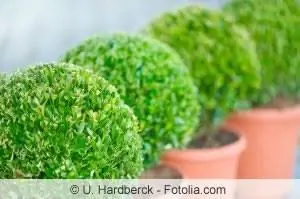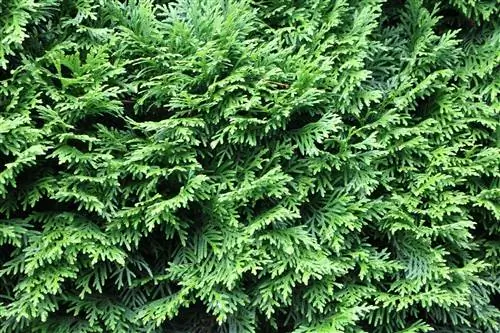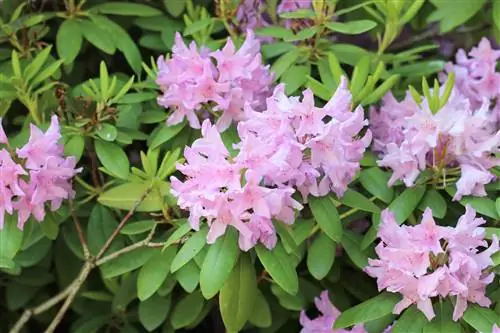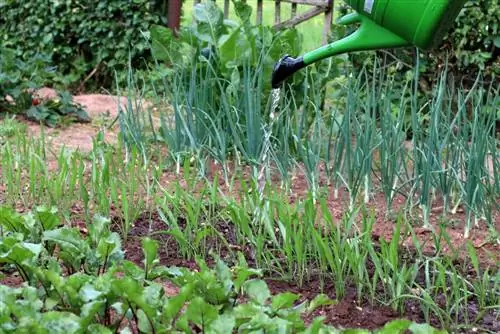- Author admin [email protected].
- Public 2023-12-17 03:39.
- Last modified 2025-06-01 06:48.
A boxwood as a hedge, solitaire or even as a sculpture in the garden is a feast for the eyes. To ensure that it has strong sap and continues to grow to new beauty, it is important to use the right boxwood fertilizer so that no deficiency symptoms occur. The trade offers various mixtures, but it also depends on the location and the soil in which the boxwood is located in order to choose the optimal composition. Here you will find helpful information on how to find the right boxwood fertilizer for your garden.
When to fertilize
Especially for boxwood, a distinction is made between long-term and complete fertilizer, which can also be used for top dressing if necessary. It makes sense to fertilize boxwood in spring, i.e. March/April, so that it is supplied with all the nutrients it needs for budding and growth. If you use complete fertilizer, you can fertilize until June. Use the dosage that comes with almost all commercial fertilizers and stick to the specified amounts to get a densely leafy, green boxwood. Whether you use liquid fertilizer or granules for your garden depends on your personal preference. However, it is important that fertilizer does not get on the leaves. It can cause damage, which can be avoided if splashes or grains are removed from the granules.
- When planting the boxwood, add fertilizer to the excavation, it will be slowly absorbed from there
- Granules can simply be sprinkled on the ground and washed in with plenty of water, but it makes more sense to dissolve them in irrigation water overnight
- Only use liquid fertilizer diluted, otherwise the concentration is too high and burns in the root area can occur
- Long-term fertilizer supplies the Bux for up to six months
- Use complete fertilizer in half concentration for top dressing on poor soils until June
- Avoid over-fertilization, especially in spring
Tip:
In addition to the fertilizers mentioned above, liquid fertilizer is also available, which can be used when watering every two to three weeks. However, it is only recommended to a limited extent for a long, large hedge because regular watering is a lot of work and should only be done during long periods of drought.
Compositions
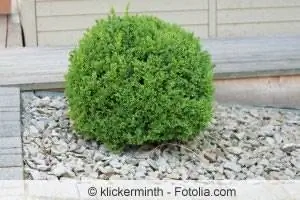
Boxwood requires an optimal mixture of phosphates, nitrogen and potassium, supplemented by organic substances, for good growth of firm, green leaves and dense foliage. It is also advisable to ensure that long-term fertilizers are supplemented with minerals such as iron, boron, copper and magnesium, so-called micronutrients, which are rarely found in dissolved form in natural garden soil. Manure as fertilizer is not recommended, its composition can vary and may not contain the right components. The compositions of complete fertilizer and long-term fertilizer are different, due to the different application times. So when buying, pay attention to which type of fertilizer you want, mixing it is not beneficial. Basically, the three most important ingredients in many products are marked with numbers so that the garden owner can see at first glance what composition the nutrients are present in. The abbreviation 16 - 6 - 13, 5 denotes the composition with
- 16% nitrogen
- 6% phosphorus
- 13, 5% potassium
There may also be further information describing the minerals and micronutrients. Basically, the same order has prevailed for all products. Nitrogen always comes first, then phosphorus, and lastly potassium, followed by additional nutrients if necessary. The correct composition is guaranteed with most products, especially for the boxwood, but the soil itself can require a different composition; many garden soils already contain too much phosphorus, and further fertilization could cause damage in this case. If you are unsure about the condition of the soil in your garden, you can find out with a test. The soil doesn't even have to be sent in and analyzed. There are test sets available commercially that can be used to determine various soil values quite accurately. This is also useful if you want to know about the pH value. Many plants do not tolerate acidic soils well, while others start to suffer from calcareous soil.
Tip:
Make sure that the granules to be used are very finely grained so that they can be dosed easily and optimally.
Proper application
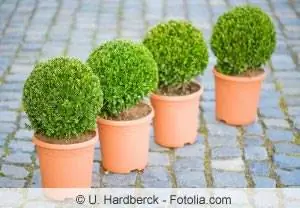
If you're new to your garden and want to plant boxwood, you should think about fertilizer when planting. Especially in new development areas where soil is often first brought in for the garden, the soil often does not contain enough nutrients and minerals. Although the boxwood is generally a frugal and easy-care plant, it still needs sufficient nutrients for the development of its leaves and for a bright green color. The plants then develop enough strength to withstand possible infestation by pests. Especially with foreign soil, even if it is designated as topsoil, it is advisable to carry out a soil test so as not to fertilize incorrectly.
- fertilize at the beginning of the growing season with a slow-release fertilizer
- If you prefer complete fertilizer, it should be applied in March/April; if necessary, fertilize again in June at half the concentration
- stick to the dosage instructions, over-fertilization causes damage and tends to inhibit growth
- When planting a new boxwood, add some fertilizer to the excavation and water generously
- do not fertilize in full sun, ideally in the evening, so everything can soak in overnight
- remove the fertilizer from the plants if there is any buildup there
- Too high fertilizer concentration can lead to burns in the root area, use plenty of water
Conclusion
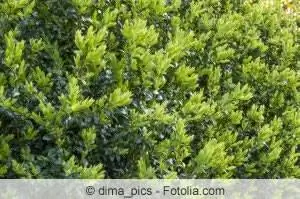
With the right fertilizer, every boxwood becomes a gem in the garden. When choosing, however, it is important to consider how much fertilizer the soil actually needs. The use of long-term or complete fertilizer is a question of personal preference. Long-term fertilizer offers advantages in this regard because it only needs to be applied once a year and reliably supplies the boxwood with all the necessary nutrients. This makes it much easier to avoid over-fertilization. Boxwood fertilizer is specially tailored to the growth and development of the rich green color.

